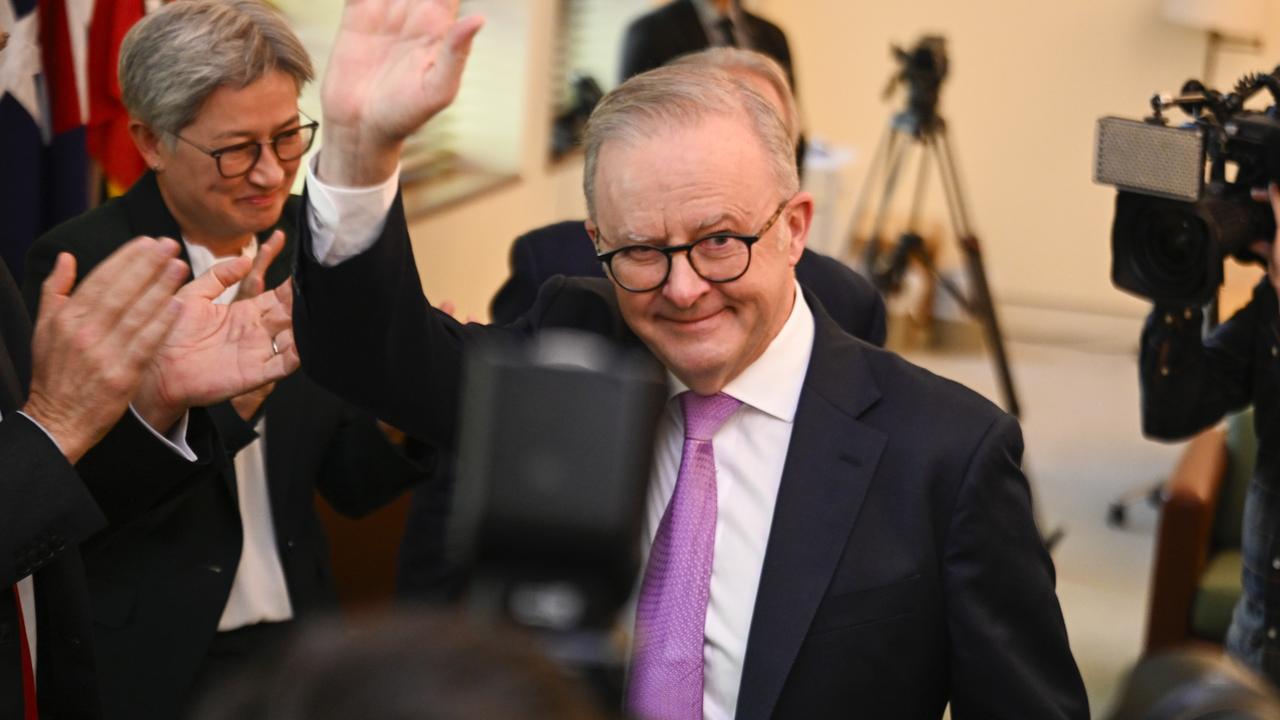Iron to follow steel downhill
ALMOST every stockbroking house in Australia is reaffirming buy recommendations for BHP, with most sticking to a $45 target.
WITH the 40 per cent decline in the share price of BHP in the past 16 months, almost every stockbroking house in Australia is reaffirming buy recommendations, with most sticking to a $45 target.
It's human nature to redouble one's determination to be right in the face of emerging evidence that one is wrong, so we can forgive the original buy recommendations at much higher prices and even the strong buy recommendations being published now.
You can imagine analysts reassuring themselves with the question: "Well, it was a buy at $40. It's got to be a strong buy at $30. Doesn't it?"
The argument goes something like this. BHP will earn $18 billion in the year to next June, or $3.40 a share on the 5.324 billion shares on issue.
Their prospective price-earnings ratio is therefore less than 10 times.
Furthermore, the prospective dividend is $1.20 a share, putting them on a dividend yield approaching 4 per cent.
Did I mention the prospect of capital management, such a return of capital or a special dividend?
Given the circumstances, I thought it best to go back to basics and scrutinise BHP's major customers to see if any further insights could be gained.
A list of BHP's top 12 customers reveals that nine of them are steel producers. Further analysis published by Standard & Poor's reveals 42 per cent of BHP's revenue is from China and Japan (and another 22 per cent is from the rest of Asia).
My simple objective in assessing whether BHP is cheap at current prices is to take a brief look at the major driver of the Chinese economy, investment, and to analyse recent commentary from major global steel producers.
China's reliance on infrastructure spending to meet gross domestic product targets, as measured by investment as a share of GDP, is not sustainable.
While China's GDP has grown at 10 per cent annually over the past three decades, investment has grown at 11 per cent. China understands the need to rebalance its economy through domestic consumption, but this is seen as a difficult task.
It is actively pursuing external customers via exports to carry the load while it tries to encourage this internal shift.
This search for external customers is particularly acute in steel.
China's steel output has grown 60 per cent in the past five years and now accounts for close to 50 per cent of global production.
Global steel consumption is about 1.4 billion tonnes a year.
According to the China Iron and Steel Association, China's steel production capacity for this year is a record 900 million tonnes, including 80 million tonnes of new capacity added last year.
With mounting pressure on Chinese domestic demand, which is expected to hit 750 million tonnes by 2015, a lot of inexpensive steel needs to be pushed to the export markets, and that is happening.
European steel production capacity is 210 million tonnes a year, making shutdowns and anti-dumping accusations inevitable. Indeed it has already started.
ArcelorMittal is the world's largest steel producer, with 87 million tonnes a year.
For this year's June quarter, operating profit of $US1.1bn ($1.04bn) and sales of $US22.5bn were down 50 per cent and 10 per cent respectively on last year's June quarter.
The main thrust of the commentary in the report is that inexpensive Chinese steel exports, subsided by its government, have been a drag on global prices.
Posco, the world's fourth-largest, and South Korea's largest, producer with 38 million tonnes per annum, reinforced this cautious commentary.
Its June quarter sales were steady at $US14.4bn, but net income plummeted 66 per cent on last year's June quarter.
China's waning steel demand, coupled with its chronic oversupply, has driven Chinese exports of the metal to the highest level in more than three years, affecting prices in South Korea, where Posco sells 60 per cent of its products.
Oversupply is a problem facing the global steel industry, and the rising tide of steel exports has already precipitated a volley of complaints from other countries preparing possible trade action against China on the grounds of allegedly predatory pricing.
The earnings crunch reported by ArcelorMittal in Europe, Posco in South Korea and BlueScope Steel in Australia illustrates the oversupply and cyclical nature of the global steel industry.
Importantly for investors in BHP and its peers, as steel prices remain under pressure, I believe it is logical to expect iron ore prices to follow.
Roger Montgomery is a principal at Vangaurd Investments Australia



